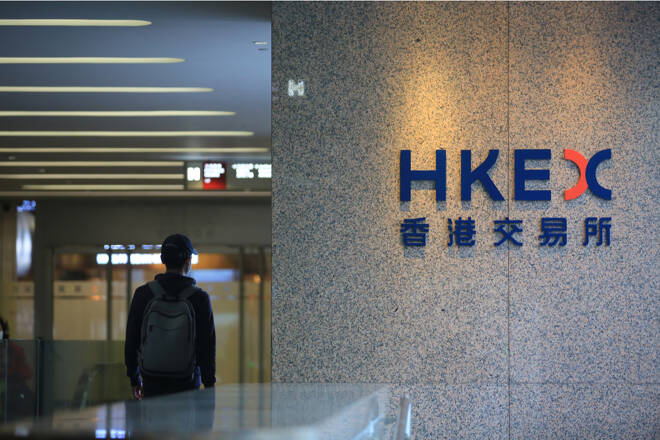Advertisement
Advertisement
Hang Seng Index Slides as Weak China PMI Hits Investor Confidence
By:
Key Points:
- Hang Seng Index falls 1.5% on weak China PMI as US tariff jitters resurface. Tech and real estate sectors lead the losses.
- ASX 200 rises 0.49%, supported by mining, oil, and banking stocks amid rising US futures markets.
- Nikkei poised for volatility on reopening amid BoJ rate hike speculation and US-China trade tensions.
US Markets See Year-End Pullback
Global markets brace for volatility amid tariff threats and central bank moves.
US equity markets ended the year on a subdued note as profit-taking weighed on sentiment. The Nasdaq Composite Index and the S&P 500 posted losses of 0.90% and 0.43%, respectively, while the Dow slipped by 0.07%.
Crypto-related stocks faced another challenging session despite bitcoin (BTC) posting gains. MicroStrategy (MSTR) slid by 4.40%, while Marathon Holdings (MARA) declined by 3.01%.
Nevertheless, it was a stellar year, with the Nasdaq and S&P 500 rallying 29% and 23%, respectively, while the Dow rose 13% in 2024.
Tuesday’s US market session could influence Thursday’s Asian markets.
US House Data Signals Economic Risks
On Tuesday, housing sector data signaled a potential pullback in consumer sentiment. The S&P/Case-Shiller Home Price Index increased by 4.2% year-on-year in October, slowing from 4.6% in September.
Falling home prices may weigh on consumer confidence, potentially curbing spending, which accounts for over 60% of GDP. Weaker private consumption could impact the US economy. As a key economic indicator, housing market trends remain a barometer for the broader US economy.
China Caixin Manufacturing PMI Reflects Growing Challenges
On Thursday, January 2, China’s all-important Caixin Manufacturing PMI fell from 51.5 in November to 50.5 in December. Falling external demand underscored concerns about the global economy amid US tariff threats.
CN Wire reacted to the December report, stating,
“External demand weakened, with the New Export Orders Index returning to contraction territory. Sampled companies cited a sluggish global economic environment and dim trade prospects as key factors reducing overseas demand for Chinese manufactured products.“
Hang Seng Index Reacts to Weak Data
In Asian markets, the Hang Seng Index slid by 1.50% on Thursday morning. China’s Caixin Manufacturing PMI data and US tariff threats weighed on investor sentiment.
The tech sector led the declines, with the Hang Seng Tech Index falling 1.35%. Tech giants Alibaba (9988) and Baidu (9888) saw losses of 0.42% and 1.57%, respectively. Real estate stocks also struggled as the Hang Seng Mainland Properties Index dropped by 0.22%.
Mainland China’s CSI 300 and Shanghai Composite posted declines of 1.42% and 1.05%, respectively. December’s PMI data underscored Beijing’s challenges, including weakened export demand due to US tariffs, slowing domestic factory activity, and rising pressure to implement effective stimulus measures.
ASX 200 Opens 2025 on a Positive Note
Australia’s ASX 200 Index positively kickstarted 2025, advancing by 0.49%. US futures moved higher on Thursday, boosting demand for ASX 200-listed stocks. Banking, gold, mining, and oil-related stocks contributed to the gains.
Key movers included Woodside Energy Group (WDS), which rallied 1.46%, while Fortescue Metals Group (FMG) jumped 2.90%. Upward trends in oil and iron ore prices drove buyer demand. Higher commodity prices bolster the appeal of mining and energy stocks, suggesting opportunities in companies like Fortescue Metals and Woodside Energy.
Meanwhile, Tuesday’s pullback in US Treasury yields boosted demand for high-yielding Aussie bank stocks. Commonwealth Bank of Australia (CBA) and National Australia Bank (NAB) also posted gains.
Nikkei Faces Potential Turbulence on Reopening
With Japanese markets closed on Thursday, speculation surrounds the Nikkei’s reopening. The USD/JPY advanced by 0.30% to 157.312 on Thursday. The advancing USD/JPY could support export-driven stocks in Japan, but traders should prepare for potential volatility from BoJ rate announcements.
Outlook
Global markets will focus on central bank commentary, US tariff developments, and potential stimulus measures from Beijing. These factors will drive near-term market trends.
- US tariffs could impact demand for Chinese goods and the economy, impacting China-dependent economies such as Australia.
- Monitor central bank commentary closely – hawkish signals may pressure equity valuations, particularly in rate-sensitive sectors, including tech and real estate.
- Amid looming tariffs, stimulus measures from Beijing could be crucial, potentially countering the effects of weaker external demand.
Discover the implications of these market moves for your portfolio here.
About the Author
Bob Masonauthor
With over 28 years of experience in the financial industry, Bob has worked with various global rating agencies and multinational banks. Currently he is covering currencies, commodities, alternative asset classes and global equities, focusing mostly on European and Asian markets.
Did you find this article useful?
Latest news and analysis
Advertisement
